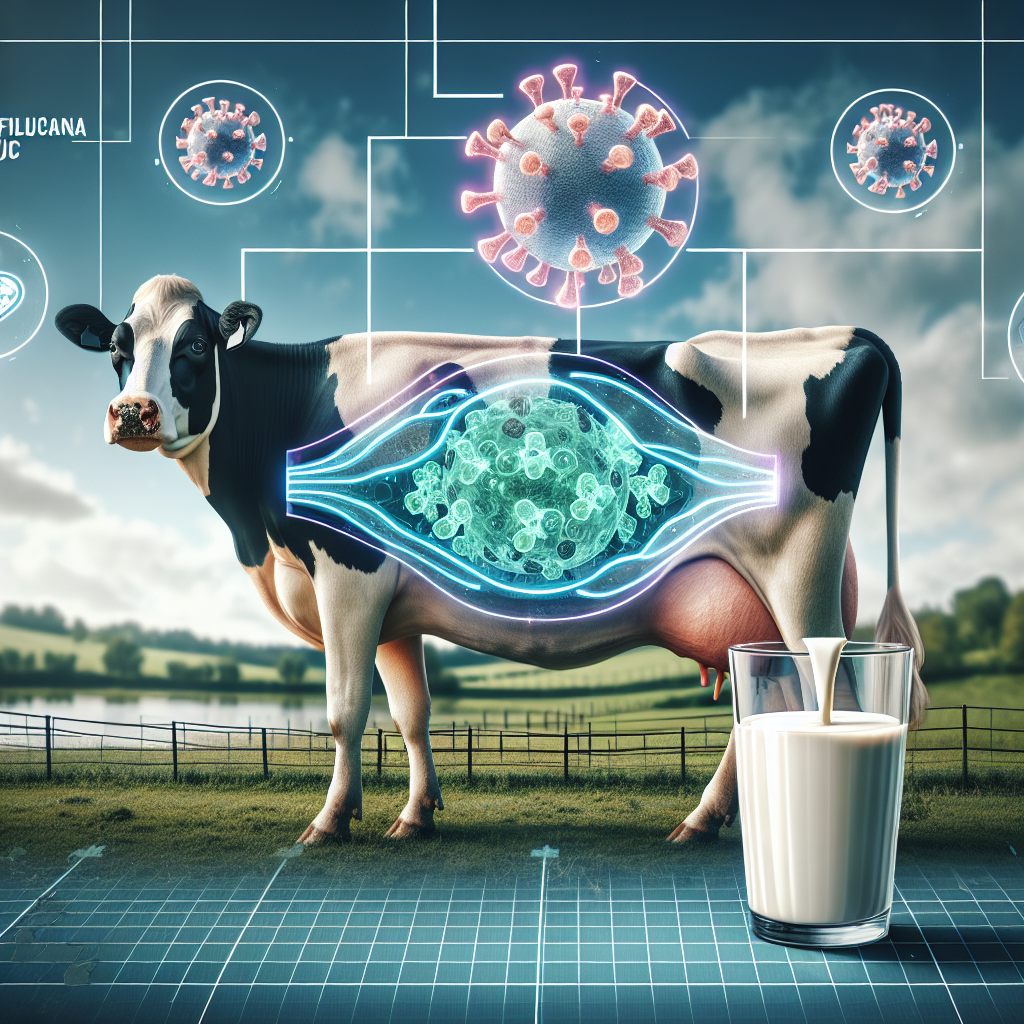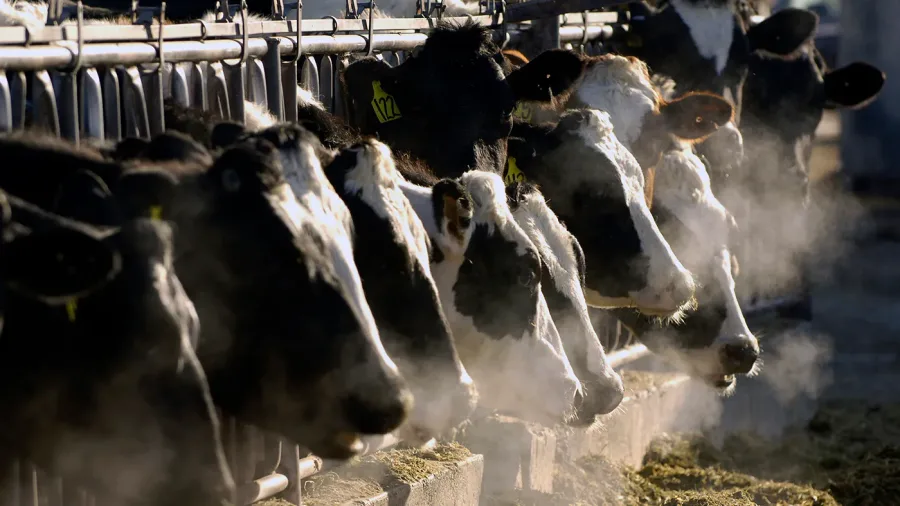Avian flu has struck Nevada’s dairy cows, sending shockwaves through the industry. With hundreds of herds affected nationwide, farmers face unprecedented challenges. Learn how this outbreak impacts the dairy sector, what it means for milk safety, and the crucial steps to protect both animals and consumers.
Summary:
Confirming Highly Pathogenic Avian Influenza (HPAI) in Nevada’s dairy cows is worrying for the dairy industry. It started in Nye County and has now spread to Churchill County, leading to quarantines and mandatory testing on affected farms. This is part of a more significant outbreak affecting 924 dairy herds in 16 states since last March. Pasteurized dairy products are still safe, but there are concerns about market impacts and the cost of quarantine. The USDA has launched a national testing program to help stop the spread of H5N1 among cows. While the risk to humans is low, the industry faces significant challenges. Safety tips include drinking pasteurized milk, eating pasteurized cheeses, and cooking meat properly. State Veterinarian Peter Rolfe stresses boosting biosecurity to protect animals and workers.
Key Takeaways:
- First detection of avian flu in Nevada dairy cows prompts quarantine and testing measures.
- Avian influenza H5N1 has affected 924 dairy herds across the United States.
- Pasteurization is effective against virus transmission, maintaining dairy safety.
- USDA’s national H5N1 milk testing program aims to mitigate spread among herds.
- Severe challenges face dairy farmers, including biosecurity demands and market risks.

The Nevada Department of Agriculture (NDA) has confirmed cases of Highly Pathogenic Avian Influenza (HPAI) in dairy cattle in Churchill County. This news follows the first detection of HPAI in Nevada’s dairy cows in Nye County last December, raising concerns about the virus’s spread and impact on the dairy industry.
Outbreak Details and Response
The affected farms in Churchill County are now under quarantine. Mandatory testing will continue until the herds are confirmed virus-free. State Veterinarian Peter Rolfe stressed the importance of boosting biosecurity measures to prevent disease and protect animals and workers.
Key actions taken:
- Quarantine of affected farms
- Ongoing mandatory testing
- Enhanced biosecurity practices
National Situation
Since last March, the bird flu outbreak has hit dairy herds across multiple states. As of January 10, the Centers for Disease Control and Prevention (CDC) reported:
- 924 dairy herds in 16 states affected by H5N1
- Nearly 11,000 wild birds in 51 U.S. jurisdictions infected
- About 134 million poultry in all 50 U.S. states impacted
“Ensuring the industry’s safety is our top priority, and the NDA is working closely with dairy farmers,” said NDA State Veterinarian Peter Rolfe.
Safety of Dairy Products
The NDA has assured consumers that dairy and meat products are safe. The U.S. Department of Agriculture (USDA) has determined that pasteurized milk will not transmit the virus to humans. However, raw milk remains illegal in Nevada, and officials continue to recommend following food safety guidelines.
Food safety tips:
- Drink only pasteurized milk and eat pasteurized cheeses
- Cook meat to proper internal temperatures
National Testing Program
The USDA has started a national H5N1 milk testing program in response to the outbreak, which aims to include all 48 mainland states. The program seeks to stop H5N1 from spreading among dairy cows and lower the risk of transmission to humans or other animals.
Human Health Concerns
While the CDC maintains that the risk to humans remains low, the recent outbreak has raised some concerns. In April last year, the CDC confirmed one human HPAI A(H5N1) infection in Texas, believed to be the first case of the virus’s likely mammal-to-human spread. Since then, a few human cases have been reported in people exposed to infected dairy cows.
“We’re in a tough spot, and it could get worse,” said Angela Rasmussen, a virologist at the University of Saskatchewan in Canada. “I don’t know if bird flu will become a pandemic, but if it does, we’re in trouble.”
Industry Impact and Challenges
The dairy industry faces significant hurdles as it deals with the H5N1 outbreak. Farmers worry about potential market losses and the financial impact of quarantine measures. The National Milk Producers Federation reports that some farmers fear being officially listed as an affected farm, though no cases of lost milk markets have been confirmed yet.
Industry concerns:
- Possible market losses
- Financial strain from quarantine measures
- Worry about being listed as an affected farm
Key Takeaways
- HPAI detected in dairy cattle in Churchill County, Nevada
- 924 dairy herds across 16 states have been affected by H5N1 since last March
- Pasteurized milk remains safe to drink
- USDA implementing a national milk testing program
- Industry facing challenges with potential market impacts and biosecurity measures
The Bottom Line
As the dairy industry navigates this unprecedented challenge, farmers must stay vigilant, implement strict biosecurity protocols, and follow the latest guidelines from agricultural authorities. Dairy farmers should contact their local extension office for the most current information on biosecurity measures and testing procedures to protect their herds from avian influenza.
Learn more:
- Avian Influenza Outbreak: How US Dairy Cows Are Suffering
- USDA Implements Mandatory HPAI Testing in Dairy Cattle: Unveils Widespread Virus Outbreak
- Colorado Dairy Herd Tests Positive for HPAI
Avian flu has struck Nevada’s dairy cows, sending shockwaves through the industry. With hundreds of herds affected nationwide, farmers face unprecedented challenges. Learn how this outbreak impacts the dairy sector, what it means for milk safety, and the crucial steps to protect both animals and consumers.
Summary:
Confirming Highly Pathogenic Avian Influenza (HPAI) in Nevada’s dairy cows is worrying for the dairy industry. It started in Nye County and has now spread to Churchill County, leading to quarantines and mandatory testing on affected farms. This is part of a more significant outbreak affecting 924 dairy herds in 16 states since last March. Pasteurized dairy products are still safe, but there are concerns about market impacts and the cost of quarantine. The USDA has launched a national testing program to help stop the spread of H5N1 among cows. While the risk to humans is low, the industry faces significant challenges. Safety tips include drinking pasteurized milk, eating pasteurized cheeses, and cooking meat properly. State Veterinarian Peter Rolfe stresses boosting biosecurity to protect animals and workers.
Key Takeaways:
- First detection of avian flu in Nevada dairy cows prompts quarantine and testing measures.
- Avian influenza H5N1 has affected 924 dairy herds across the United States.
- Pasteurization is effective against virus transmission, maintaining dairy safety.
- USDA’s national H5N1 milk testing program aims to mitigate spread among herds.
- Severe challenges face dairy farmers, including biosecurity demands and market risks.
The Nevada Department of Agriculture (NDA) has confirmed cases of Highly Pathogenic Avian Influenza (HPAI) in dairy cattle in Churchill County. This news follows the first detection of HPAI in Nevada’s dairy cows in Nye County last December, raising concerns about the virus’s spread and impact on the dairy industry.
Outbreak Details and Response
The affected farms in Churchill County are now under quarantine. Mandatory testing will continue until the herds are confirmed virus-free. State Veterinarian Peter Rolfe stressed the importance of boosting biosecurity measures to prevent disease and protect animals and workers.
Key actions taken:
- Quarantine of affected farms
- Ongoing mandatory testing
- Enhanced biosecurity practices
National Situation
Since last March, the bird flu outbreak has hit dairy herds across multiple states. As of January 10, the Centers for Disease Control and Prevention (CDC) reported:
- 924 dairy herds in 16 states affected by H5N1
- Nearly 11,000 wild birds in 51 U.S. jurisdictions infected
- About 134 million poultry in all 50 U.S. states impacted
“Ensuring the industry’s safety is our top priority, and the NDA is working closely with dairy farmers,” said NDA State Veterinarian Peter Rolfe.
Safety of Dairy Products
The NDA has assured consumers that dairy and meat products are safe. The U.S. Department of Agriculture (USDA) has determined that pasteurized milk will not transmit the virus to humans. However, raw milk remains illegal in Nevada, and officials continue to recommend following food safety guidelines.
Food safety tips:
- Drink only pasteurized milk and eat pasteurized cheeses
- Cook meat to proper internal temperatures
National Testing Program
The USDA has started a national H5N1 milk testing program in response to the outbreak, which aims to include all 48 mainland states. The program seeks to stop H5N1 from spreading among dairy cows and lower the risk of transmission to humans or other animals.
Human Health Concerns
While the CDC maintains that the risk to humans remains low, the recent outbreak has raised some concerns. In April last year, the CDC confirmed one human HPAI A(H5N1) infection in Texas, believed to be the first case of the virus’s likely mammal-to-human spread. Since then, a few human cases have been reported in people exposed to infected dairy cows.
“We’re in a tough spot, and it could get worse,” said Angela Rasmussen, a virologist at the University of Saskatchewan in Canada. “I don’t know if bird flu will become a pandemic, but if it does, we’re in trouble.”
Industry Impact and Challenges
The dairy industry faces significant hurdles as it deals with the H5N1 outbreak. Farmers worry about potential market losses and the financial impact of quarantine measures. The National Milk Producers Federation reports that some farmers fear being officially listed as an affected farm, though no cases of lost milk markets have been confirmed yet.
Industry concerns:
- Possible market losses
- Financial strain from quarantine measures
- Worry about being listed as an affected farm
Key Takeaways
- HPAI detected in dairy cattle in Churchill County, Nevada
- 924 dairy herds across 16 states have been affected by H5N1 since last March
- Pasteurized milk remains safe to drink
- USDA implementing a national milk testing program
- Industry facing challenges with potential market impacts and biosecurity measures
The Bottom Line
As the dairy industry navigates this unprecedented challenge, farmers must stay vigilant, implement strict biosecurity protocols, and follow the latest guidelines from agricultural authorities. Dairy farmers should contact their local extension office for the most current information on biosecurity measures and testing procedures to protect their herds from avian influenza.
Learn more:
- Avian Influenza Outbreak: How US Dairy Cows Are Suffering
- USDA Implements Mandatory HPAI Testing in Dairy Cattle: Unveils Widespread Virus Outbreak
- Colorado Dairy Herd Tests Positive for HPAI
 Join the Revolution!
Join the Revolution!
Bullvine Daily is your essential e-zine for staying ahead in the dairy industry. With over 30,000 subscribers, we bring you the week’s top news, helping you manage tasks efficiently. Stay informed about milk production, tech adoption, and more, so you can concentrate on your dairy operations.







 Join the Revolution!
Join the Revolution!








